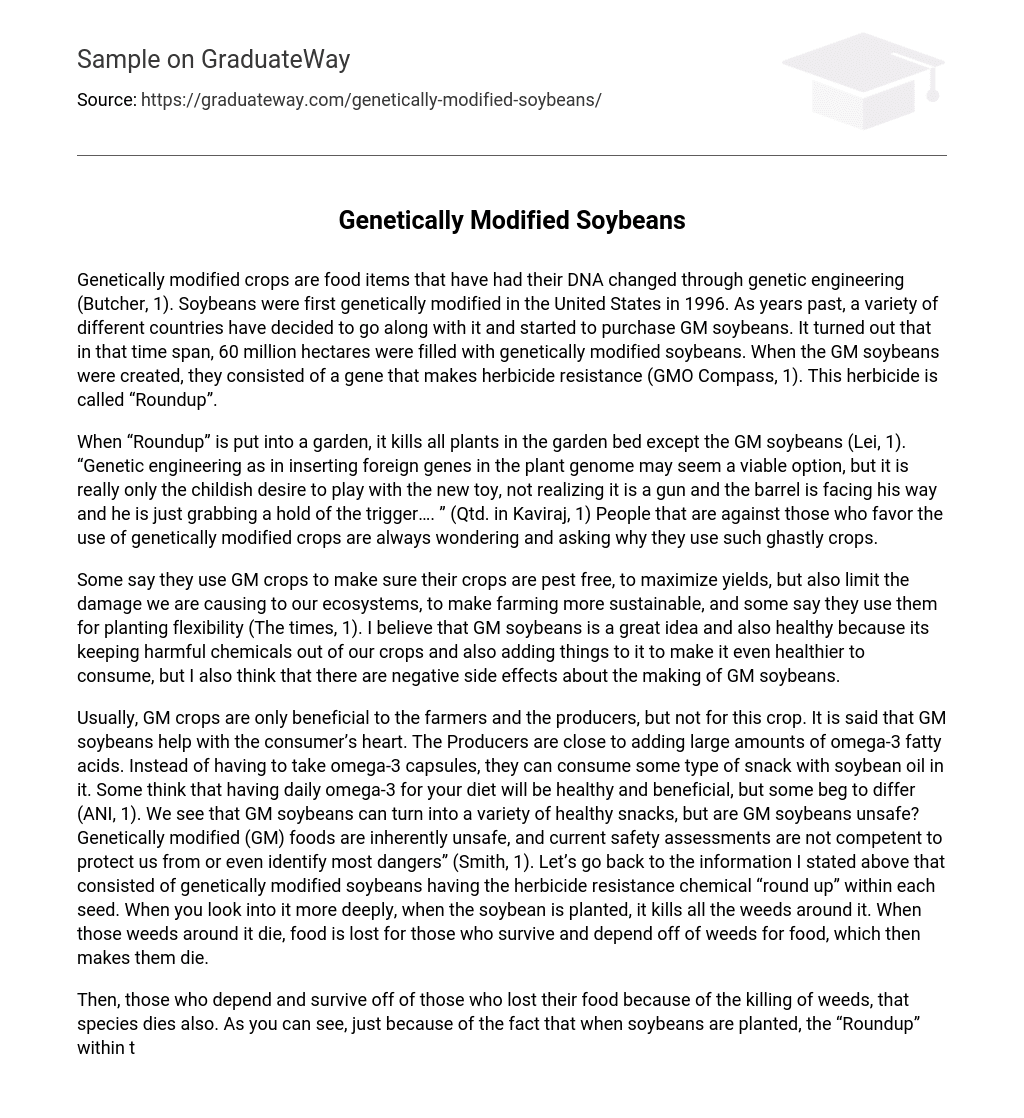Genetically modified crops are food items that have had their DNA changed through genetic engineering (Butcher, 1). Soybeans were first genetically modified in the United States in 1996. As years past, a variety of different countries have decided to go along with it and started to purchase GM soybeans. It turned out that in that time span, 60 million hectares were filled with genetically modified soybeans. When the GM soybeans were created, they consisted of a gene that makes herbicide resistance (GMO Compass, 1). This herbicide is called “Roundup”.
When “Roundup” is put into a garden, it kills all plants in the garden bed except the GM soybeans (Lei, 1). “Genetic engineering as in inserting foreign genes in the plant genome may seem a viable option, but it is really only the childish desire to play with the new toy, not realizing it is a gun and the barrel is facing his way and he is just grabbing a hold of the trigger…. ” (Qtd. in Kaviraj, 1) People that are against those who favor the use of genetically modified crops are always wondering and asking why they use such ghastly crops.
Some say they use GM crops to make sure their crops are pest free, to maximize yields, but also limit the damage we are causing to our ecosystems, to make farming more sustainable, and some say they use them for planting flexibility (The times, 1). I believe that GM soybeans is a great idea and also healthy because its keeping harmful chemicals out of our crops and also adding things to it to make it even healthier to consume, but I also think that there are negative side effects about the making of GM soybeans.
Usually, GM crops are only beneficial to the farmers and the producers, but not for this crop. It is said that GM soybeans help with the consumer’s heart. The Producers are close to adding large amounts of omega-3 fatty acids. Instead of having to take omega-3 capsules, they can consume some type of snack with soybean oil in it. Some think that having daily omega-3 for your diet will be healthy and beneficial, but some beg to differ (ANI, 1). We see that GM soybeans can turn into a variety of healthy snacks, but are GM soybeans unsafe? Genetically modified (GM) foods are inherently unsafe, and current safety assessments are not competent to protect us from or even identify most dangers” (Smith, 1). Let’s go back to the information I stated above that consisted of genetically modified soybeans having the herbicide resistance chemical “round up” within each seed. When you look into it more deeply, when the soybean is planted, it kills all the weeds around it. When those weeds around it die, food is lost for those who survive and depend off of weeds for food, which then makes them die.
Then, those who depend and survive off of those who lost their food because of the killing of weeds, that species dies also. As you can see, just because of the fact that when soybeans are planted, the “Roundup” within them kills all weeds surrounding it, it slowly obstructs the entire food chain. It is still an on going battle between if any GM crop is safe or unsafe. Genetically modified soybeans consist of a gene that makes herbicide resistance, which is called “roundup”





